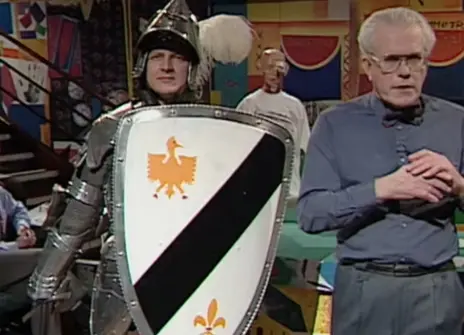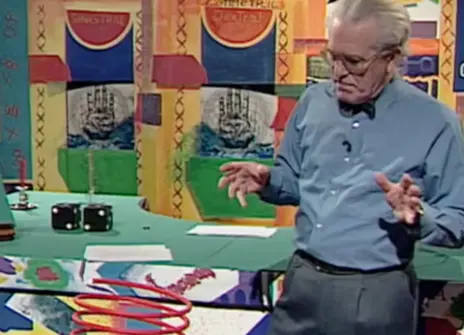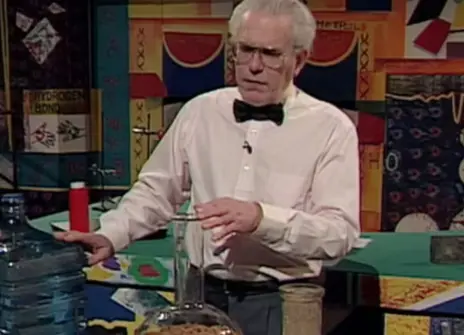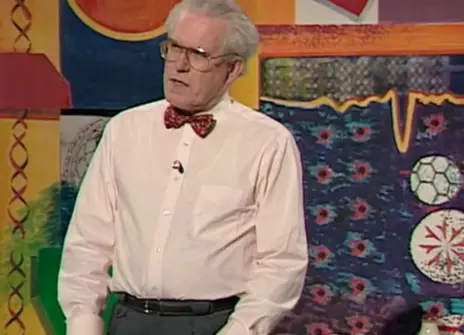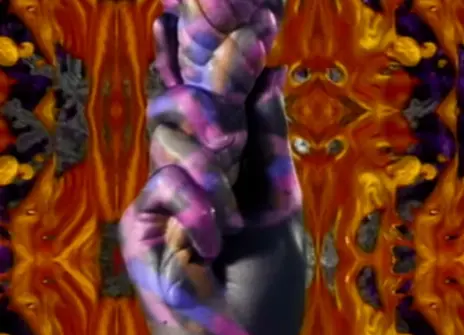Lecture 5 – In the hands of the giants
From the 1992 lecture brochure:
All the molecules we have talked about so far have been smallish with 100 atoms or less. We are surrounded by giants, frequently with a million atoms or more, which can be man-made, or 'natural'. These giants share the property of being constructed with repeating units. In this talk we examine those handed giants - carbohydrates and proteins - whose building blocks are glucose and amino acids. These provide the scaffolding of plants, and their energy stores. Animals exploit these by breaking them down to their building blocks and then reconstructing them, as we do, to glycogen and proteins.
In the proteins there is a 'language' produced by 'letters', the amino acids. This body language makes our hair, bones, blood, muscles and brains. Perhaps most magically of all, it makes the enzymes that control our body chemistry.
Our structure and activity is controlled by proteins. How are these assembled and where is the plan for each of their structures? The construction code is held - one for each amino acid in 3 letter segments - by our final handed giant, DNA, present in the nuclei of all our cells. We are complicated structures and the enormous coded messages must be handed on to our descendants. If the code is interfered with, the result is cancer. The chemist leads in the fight against this disease with weapons that recognise and destroy the DNA of the rogue cells. For each of us, our DNA contains the blueprint for the construction of our brains, which in turn control our language and our handedness, so we now see that language and handedness are the result of chemical events dependent on molecular chirality.
We must never suppose that we know everything. A final mystery - where did handed molecules come from in the first place?
About the 1992 CHRISTMAS LECTURES
From the 1992 lecture brochure:
We are set apart from other animals both by the use of language whose control is normally located in the left side of the brain and by the fact that unlike most other animals, which have mixed handedness, we are predominantly right-handed. Recent speculations have focused on the possibility that these two attributes are interconnected genetically, a link that could lead to an understanding of the neurobiology of language and its molecular biological basis.
In these lectures, we shall look at first our own symmetry, overall in terms of handedness and our superficial appearance, and also below the surface at our brains and other organs. Then we shall look at ourselves in the world at large, focusing on the symmetry of our fellow creatures and the artefacts that we have created. The connection of both of these to left-right relationships will be explored.
The most significant handed (chiral) objects we encounter, usually unconsciously, are the molecules that we and all of our surroundings are made of. We will look at the nature of these molecules and trace the understanding of the significance of handedness at the molecular level in the 19th century, for which it was the most far-reaching chemical realisation.
Our contact with handed molecules has profound significance in terms of, for example, sensory perceptions such as taste and smell. We can distinguish between handed molecules and this tells us that our sensory apparatus is itself handed.
Our existence depends upon the handedness of molecules both large and small and without such molecules, we would not be able to digest our food, build our bodies, or transmit our characteristics to the next generation.
We return to the opening speculation. The genes - themselves composed of handed molecules - control the development of handedness and cerebral dominance, a link that has the potential to give us an understanding of the biology of language. We leave our consideration of chirality - handedness -with an unsolved mystery. Where do chiral molecules come from?

